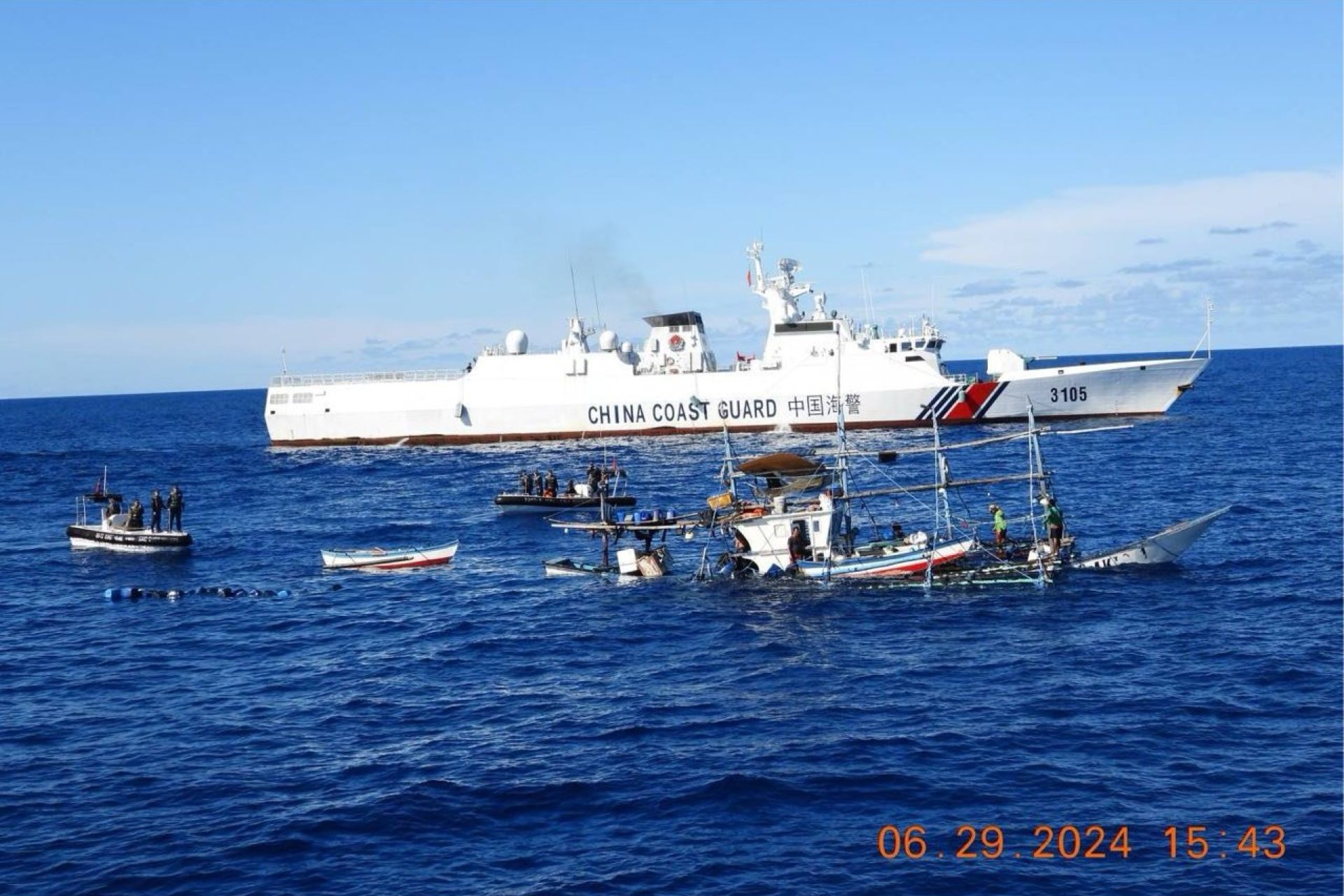Breaking News
China's new Coast Guard law escalates maritime tensions in South China Sea.
According to information published by Forbes on July 31, 2024, China’s Coast Guard has been at the center of escalating maritime disputes in recent months.
Follow Army Recognition on Google News at this link

Chinese Zhaotim-class patrol cutter CCG 3105. (Picture source: Philippine Navy)
In June, Chinese Coast Guard (CCG) vessels clashed with Philippine troops at Second Thomas Shoal, resulting in injuries to several Philippine service members, including one who lost a finger. More recently, the CCG seized a Taiwanese fishing boat and its crew near the Kinmen Islands, only six miles from China’s coast. This seizure was followed by Beijing deploying dozens of warplanes and nine naval vessels to encircle Taiwan.
These aggressive actions are rooted in China’s new Coast Guard Law, which effectively authorizes more assertive behavior in the disputed waters of the South and East China Seas, as well as the Taiwan Strait. The law lays a legal groundwork for the CCG to undertake aggressive measures against foreign vessels, under the guise of protecting China's maritime interests.
China frequently employs what is known as institutional lawfare, creating domestic laws to justify actions that contravene international norms. This tactic allows China to present its actions as lawful within its own legal framework, thus legitimizing them to its domestic audience.
In mid-May, a Philippine humanitarian convoy managed to deliver aid to fishermen at Scarborough Shoal, despite the presence of Chinese maritime forces. Following this, Beijing announced "Order No. 3," a regulation empowering the CCG to detain foreigners in “waters under China’s jurisdiction” for up to 60 days without trial.
This regulation defines potential offenses broadly, including actions that endanger national security or disrupt public order. Furthermore, the law allows the CCG to establish temporary maritime security zones and restrict unauthorized surveying and mapping activities.
The law’s ambiguity poses significant risks to international security. By not clearly defining “waters under Chinese jurisdiction,” it potentially validates the arrest of foreign vessels within the exclusive economic zones (EEZs) of China’s neighbors. This includes areas claimed under the controversial "Nine-Dash Line" on China's 2023 map. Consequently, the law could be used to justify interference with foreign vessels exercising lawful navigation rights.
The regulation appears aimed at legitimizing forceful actions at disputed sites like Scarborough Shoal and Second Thomas Shoal, where China has previously disrupted military resupply missions. The CCG's presence near the Japanese-controlled Senkaku Islands for over 200 days also raises concerns about potential conflicts with Japan.
The law’s fisheries provisions are especially troubling. The recent seizure of a Taiwanese fishing vessel was justified under China’s unilateral summer fishing ban, which has been in place since 1995. This ban covers areas claimed by both China and Vietnam under the United Nations Convention on the Law of the Sea (UNCLOS), and its enforcement risks escalating regional tensions.
Order No. 3 signals China’s intent to challenge international maritime law through aggressive enforcement backed by the CCG. In response, the United States has pledged $500 million to enhance the Philippines’ maritime defense capabilities.


























